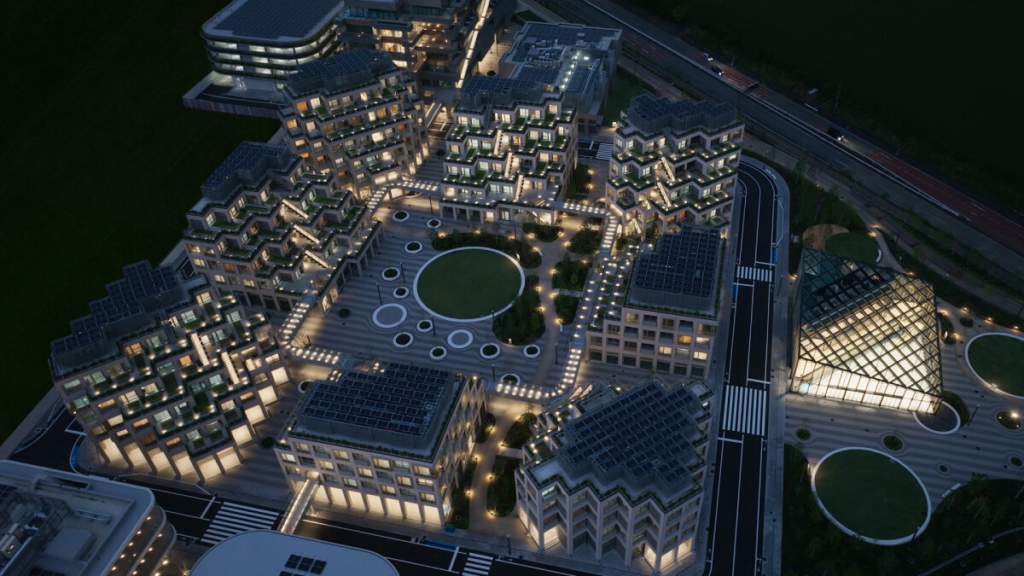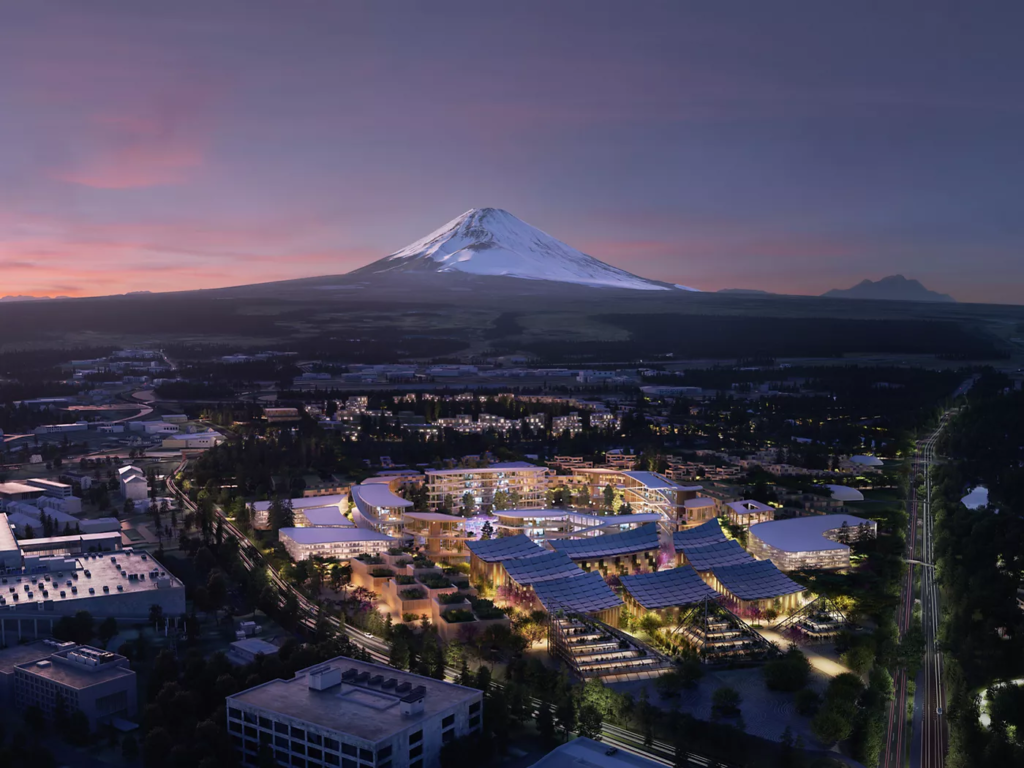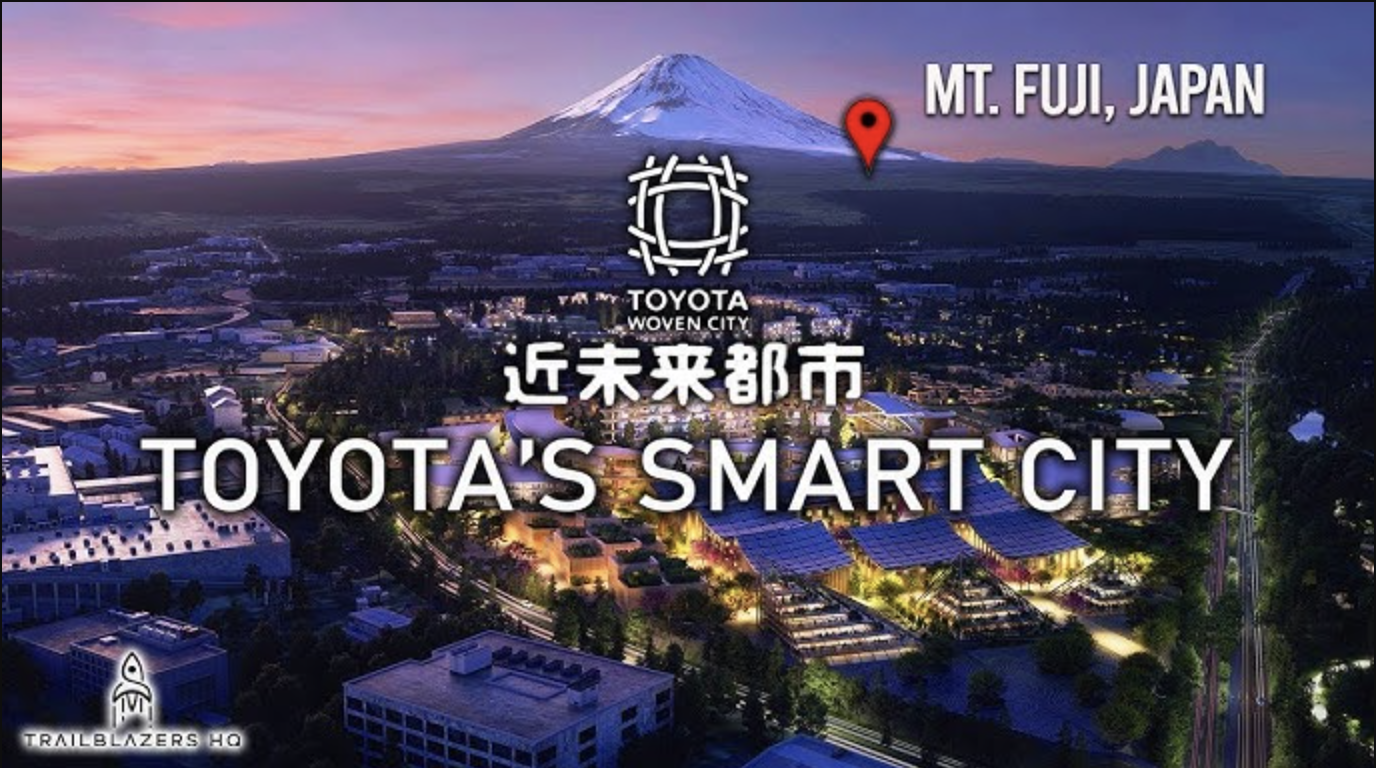Toyota’s Woven City is a groundbreaking venture into the future of urban living, merging technology, sustainability, and innovative design. Situated at the base of Mount Fuji in Japan, the city represents Toyota’s vision of a “living laboratory,” where cutting-edge technologies are tested and refined in a real-world setting.
The ambitious project began in 2021, and with Phase 1 nearing completion, the city is poised to welcome its first residents by fall 2025. With its focus on sustainability, advanced mobility, and community-centric innovation, Woven City aims to redefine the concept of urban living.
Woven City: A Hub of Innovation and Design
Woven City’s design reflects Toyota’s commitment to creating a harmonious balance between technology, community, and the environment.
Renowned Danish architect Bjarke Ingels designed the city to feature three distinct types of pathways: one for fast-moving vehicles, another for slower mobility solutions like bicycles and scooters, and a third as a pedestrian-friendly promenade.
This tripartite design ensures seamless integration of different modes of transportation while prioritizing safety and accessibility.
Central to Woven City’s vision is the use of hydrogen fuel cell technology to power the community. By utilizing a clean and renewable energy source, the city aims to achieve self-sufficiency while significantly reducing its carbon footprint.
The infrastructure has been meticulously planned to integrate smart homes, autonomous vehicles, and robotics into daily life. These technologies will not only improve the quality of life for residents but also serve as a testing ground for innovations that could transform urban living worldwide.
Read : Female Pizza Delivery Worker Stabs Pregnant Woman 14 Times Over $2 Tip in Florida
Woven City’s population will gradually expand, starting with the first 100 residents in 2025 and growing to 360 by the end of Phase 1. Over time, the city is expected to accommodate up to 2,000 people, creating a vibrant, interactive community of “Weavers.”
Read : Car Theft Capital of the World: Canada Ranks First with One Car Stolen Every Five Minutes
These residents will play an active role in the development and refinement of new technologies, acting as both users and contributors in this futuristic ecosystem.
Sustainability and Community at the Core
Sustainability is a cornerstone of Woven City’s design. The city is powered by hydrogen fuel cells, ensuring a clean energy supply that aligns with Toyota’s broader commitment to environmental responsibility.
Smart homes within the city are equipped with advanced energy management systems, enabling efficient use of resources while reducing waste. These homes are interconnected, forming a dynamic network that facilitates energy sharing and optimization across the community.
The city’s layout fosters a strong sense of community. Public spaces are designed to encourage interaction among residents, with lush green areas and communal gathering spots.

The pedestrian promenade, in particular, serves as a focal point for social activities, blending natural beauty with urban functionality. This emphasis on community-building ensures that Woven City is not just a technological marvel but also a place where people can thrive and connect.
In addition to its environmental and social benefits, Woven City is attracting innovative businesses. For instance, a vending machine company and a startup focused on futuristic coffee experiences are among the first confirmed participants.
Toyota has also proposed unique ideas, such as high-powered wheelchairs for individuals with disabilities and personal drones for enhanced jogging security. These ventures highlight the city’s potential as a hub for groundbreaking innovations across various industries.
Challenges and Future Prospects
Despite its ambitious goals, Woven City is not without challenges. One major concern is the potential for surveillance and data privacy issues. Similar projects, like Google’s Sidewalk Labs in Toronto, faced significant backlash due to fears of excessive data collection and misuse.
Toyota, however, is proactively addressing these concerns by implementing robust privacy safeguards and focusing on enhancing the quality of life for residents. The city has also achieved Japan’s first LEED for Communities Platinum certification, reflecting its commitment to sustainability and ethical development.
Another challenge lies in scaling the technologies tested in Woven City for broader application. While the controlled environment of the city provides an ideal setting for experimentation, the transition to real-world implementation may encounter unforeseen obstacles. Toyota’s success in overcoming these hurdles will determine the broader impact of the project on urban development globally.

Woven City’s phased development approach allows Toyota to refine its strategies and address potential issues incrementally. By gradually expanding the population and integrating new technologies, the company can ensure that the city evolves in a sustainable and resilient manner. This adaptive approach not only minimizes risks but also maximizes the potential for success.
Toyota’s Woven City is a bold step into the future, offering a glimpse of what urban living could become in the coming decades. By combining advanced technology, sustainable design, and a strong sense of community, the city serves as a model for innovative urban development.
While challenges such as privacy concerns and scalability remain, Toyota’s proactive approach and commitment to ethical development position Woven City as a pioneering project with the potential to reshape the future of cities worldwide.
As Woven City prepares to welcome its first residents in 2025, it stands as a testament to Toyota’s vision and ingenuity. This living laboratory is not just a showcase of technological advancements but also a platform for reimagining how people live, work, and interact in an increasingly connected world.
let’s enjoy few years on earth with peace and happiness….✍🏼🙏

